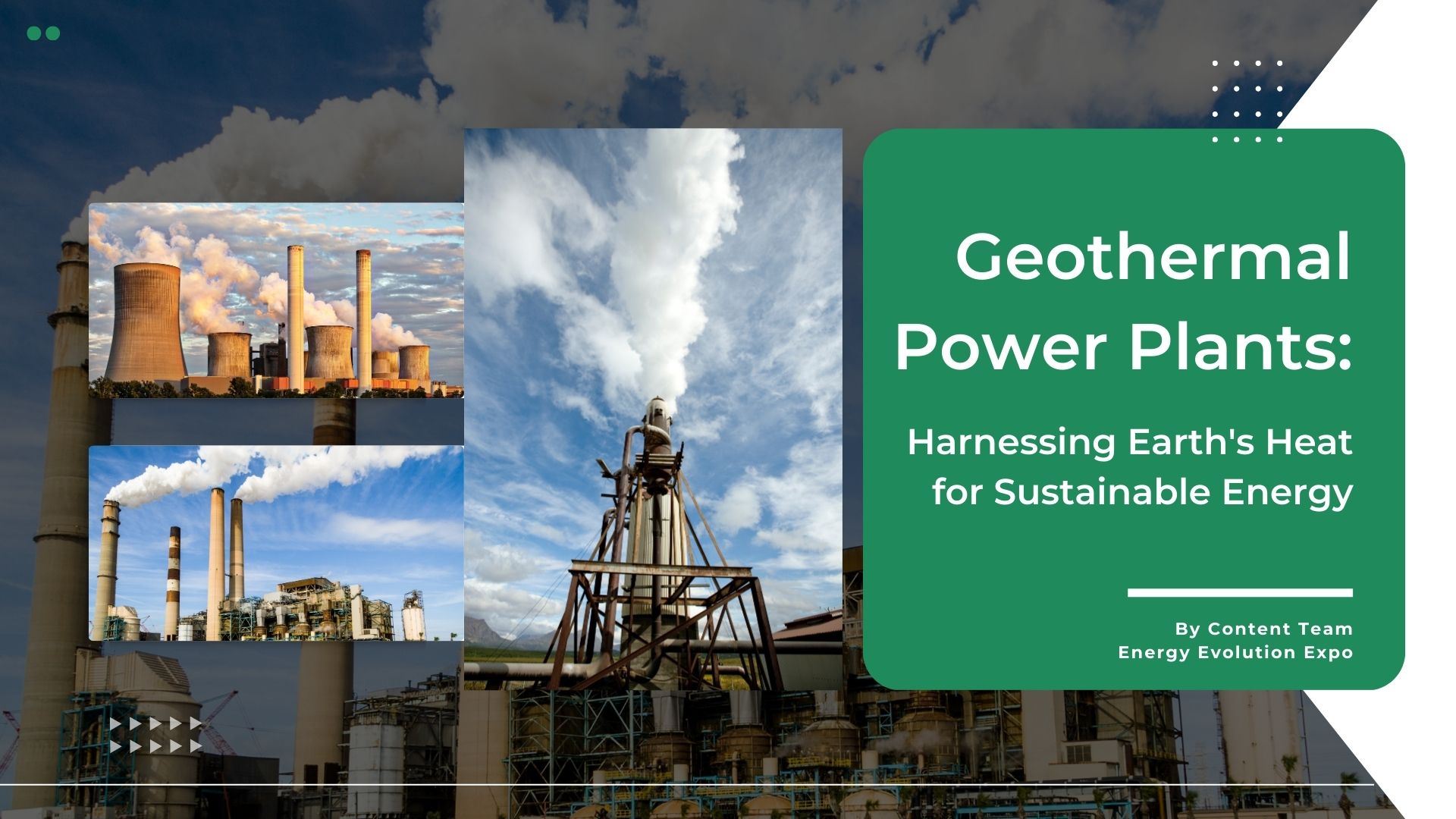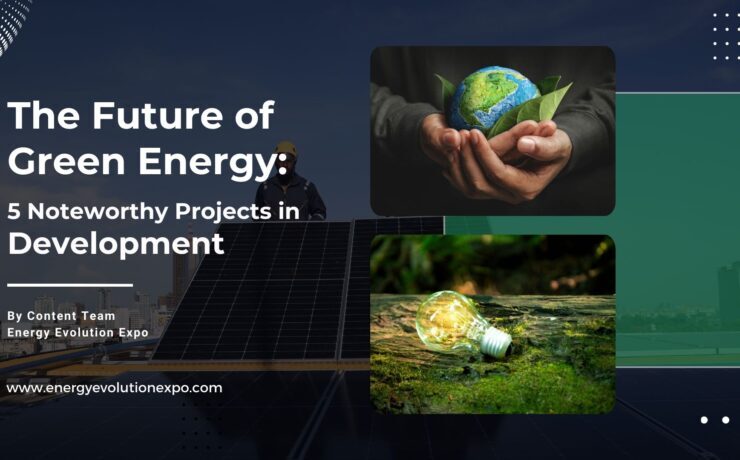Geothermal Power Plants: Harnessing Earth’s Heat for Sustainable Energy

Potential of Geothermal Power Plants
Geothermal energy refers to thermal energy derived from the Earth’s crust, originating from both planetary formation and radioactive decay. This source has been utilized for heating and/or generating electricity for many centuries. In contrast to wind and solar power, geothermal power plants generate a consistent amount of energy regardless of weather conditions. These resources are believed to be abundant enough to meet the energy demands of humanity.
Geothermal power refers to electrical power that is generated from geothermal power plants. It is classified as a renewable energy source due to the minimal heat extraction rates in comparison to the Earth’s heat capacity. On average, geothermal electric stations emit approximately 45 grams of carbon dioxide per kilowatt-hour of electricity, which is less than 5 percent of the emissions of coal-fired plants. Traditionally, geothermal electric plants were constructed on the peripheries of tectonic plates where high-temperature geothermal resources were close to the surface.
The advancement of binary cycle power plants and enhancements in drilling and extraction technology have allowed for improved geothermal systems to be implemented across a broader geographical range. This blog delves into the different types of geothermal power plants, their working principles, and their benefits, with examples from around the world showcasing their efficacy and impact.
Table of Contents

Dry Steam Power Plants
Dry steam power plants are the oldest and simplest type of geothermal power plants, directly utilizing geothermal steam from underground reservoirs to generate electricity. These plants extract steam through wells and direct it to turbines, which spin and drive generators to produce electricity. After passing through the turbine, the steam is condensed into water and reinjected into the reservoir to maintain pressure and sustainability.
Dry steam plants are highly efficient and emit very low levels of greenhouse gases. However, they are geographically limited to areas with specific geothermal resources that produce dry steam. A prime example is The Geysers in California, USA, the largest dry steam geothermal complex in the world, generating around 900 MW of electricity since the 1960s. Here are the examples in separate paragraphs:
1. Larderello Geothermal Complex, Italy:
Located in Tuscany, Italy, the Larderello Geothermal Complex has a capacity of approximately 800 MW. This complex is one of the world’s oldest geothermal power plants, with the first plant constructed in 1911. It harnesses the abundant dry steam resources of the region to generate electricity. Larderello has been a pioneer in geothermal energy, significantly contributing to renewable power in Italy for over a century.
2. Matsukawa Geothermal Power Plant, Japan:
The Matsukawa Geothermal Power Plant, located in Iwate Prefecture, Japan, has a capacity of around 23.5 MW. Operational since 1966, Matsukawa is Japan’s first geothermal power plant. It utilizes dry steam extracted from geothermal wells to generate electricity, showcasing the feasibility and reliability of geothermal energy in the region.
3. Cerro Prieto Geothermal Power Station, Mexico:
Situated in Baja California, Mexico, the Cerro Prieto Geothermal Power Station has a capacity of over 720 MW. While primarily a flash steam facility, parts of the Cerro Prieto complex use dry steam technology. It is one of the largest geothermal power complexes in the world and plays a crucial role in providing renewable energy to Mexico, illustrating the diverse applications of geothermal power technology.
Flash steam power plants
Flash steam power plants are the most common type of geothermal power plants, utilizing high-pressure hot water from deep geothermal reservoirs to generate electricity. The hot water, typically between 150°C and 370°C, is extracted and directed into a flash tank where a sudden drop in pressure causes some of the water to “flash” into steam. This steam drives a turbine connected to a generator, producing electricity.
After passing through the turbine, the steam is condensed back into water and reinjected into the reservoir to sustain the resource. Flash steam plants are highly efficient and scalable, making them suitable for large-scale power generation in areas with high-temperature geothermal resources.
Here are a few examples of flash steam power plants:
1. Wairakei Power Station, New Zealand:
Located in the Taupo Volcanic Zone, the Wairakei Power Station is one of the earliest and most well-known geothermal power plants utilizing flash steam technology. Operational since 1958, it has a capacity of approximately 180 MW. The plant uses high-pressure hot water from the geothermal field, flashing it into steam to drive turbines and generate electricity.
2. Makiling-Banahaw (Mak-Ban) Geothermal Power Plant, Philippines:
Situated in the Laguna and Batangas provinces, the Makiling-Banahaw Geothermal Power Plant, also known as Mak-Ban, has a capacity of around 458 MW. This plant uses flash steam technology to harness the geothermal resources of the region, producing significant amounts of electricity and contributing to the Philippines’ renewable energy supply.
3. Ahuachapán Geothermal Power Plant, El Salvador:
Located in the western part of El Salvador, the Ahuachapán Geothermal Power Plant has been operational since the 1970s with a capacity of about 95 MW. It employs flash steam technology to convert high-pressure geothermal fluids into steam, which then drives turbines to generate electricity. This plant is a critical component of El Salvador’s renewable energy infrastructure.
These examples illustrate the widespread use and effectiveness of flash steam power plants in various parts of the world, contributing significantly to the global renewable energy landscape.
Binary Cycle Power Plants
Binary cycle power plants are designed to harness geothermal power plants from lower temperature geothermal resources, typically ranging from 85°C to 170°C. Unlike dry steam and flash steam plants, which require high-temperature steam or water, binary cycle plants can operate efficiently with moderate geothermal heat sources, expanding the potential for geothermal energy use. Binary cycle power plants work by extracting hot water or steam from geothermal reservoirs through wells, typically at temperatures between 85°C and 170°C.
This geothermal fluid is insufficient for direct steam generation but ideal for binary cycle systems. The fluid passes through a heat exchanger, transferring its heat to a secondary working fluid with a lower boiling point, such as isobutane or isopentane. The secondary fluid vaporizes and, under high pressure, drives a turbine connected to a generator, producing electricity. Afterward, the vaporized secondary fluid is cooled and condensed back into liquid form in a condenser, then recycled to the heat exchanger in a closed-loop system.
The cooled geothermal fluid is reinjected into the reservoir to maintain pressure and resource sustainability. Binary cycle plants efficiently utilize lower temperature resources, have lower emissions, and provide operational flexibility due to the controlled properties of the secondary fluid.
Examples:
1. Chena Hot Springs, Alaska, USA:
Chena Hot Springs features a binary cycle power plant that operates with geothermal fluids at temperatures as low as 74°C, one of the lowest temperature geothermal power plants in the world. This plant demonstrates the capability of binary cycle technology to generate electricity in cold regions with moderate geothermal resources.
2. Svartsengi Power Station, Iceland:
The Svartsengi Power Station in Iceland primarily uses flash steam technology but also incorporates binary cycle technology to optimize energy extraction from its geothermal resources. It produces both electricity and hot water for district heating, showcasing the hybrid application of geothermal technologies.
3. Dara Jalil Geothermal Power Plant, Turkey:
The Dara Jalil plant in Turkey utilizes binary cycle technology to generate electricity from moderate temperature geothermal resources. This plant is a key example of how binary cycle systems can effectively harness geothermal energy in regions with suitable resources, contributing to Turkey’s renewable energy mix.
Binary cycle power plants represent a versatile and efficient approach to geothermal energy, capable of exploiting lower temperature geothermal resources and providing a reliable source of renewable energy in diverse geographical locations.
Incorporating geothermal power plants into the energy sector presents a sustainable, dependable, and economically advantageous answer to the increasing global energy demands. Due to their low environmental footprint and ability to offer a continuous energy source, they emerge as a crucial element of the renewable energy portfolio.
Instances from nations such as Iceland, the United States, Kenya, and Indonesia showcase the significant influence of geothermal power. Through overcoming obstacles and harnessing technological progress, geothermal power plants can serve as a fundamental player in the worldwide shift towards a cleaner and more sustainable energy landscape. The progression of these trends offers the potential to revolutionize the energy sector and drive the transition towards a greener and more sustainable world. To facilitate an understanding of the latest developments and trends in the Renewable energy Industry, various Conferences and Expos, which bring the Industry leaders together, are crucial.
Energy Evolution Awards, Conference, and Expo
The Energy Evolution Awards, Conference, and Expo organized by Next Business Media is making its debut in Spain in 2025. It will be a leading forum dedicated to honoring excellence in Energy Technology, showcasing innovations, and fostering collaborations. The events unite industry leaders, and visionaries to explore the latest advancements, tackle key challenges, and shape the future of Energy.
The Energy Evolution Awards, Conference, and Expo will celebrate outstanding achievements, promote sustainable practices, and drive the Energy Industry forward into a technologically advanced sustainable era. Energy Evolution Awards, Conference, and Expo will be a platform for cultivating innovation and shaping a brighter, more efficient energy landscape.





